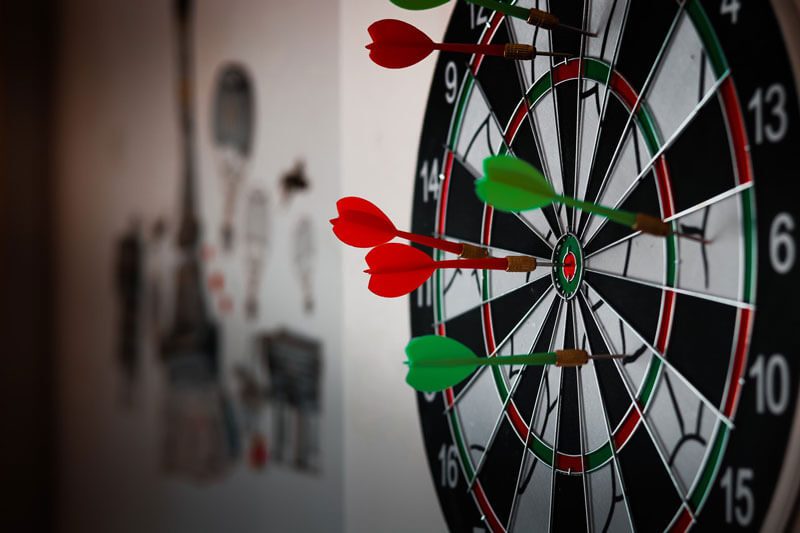The Importance of Segmentation in Strategies: From Coolhunting to Measurement

DANIEL NIETO
Planning Manager
"Developing the strategy from the segmentation is important for the precision in the construction of the message"
Within the usual construction of strategies, the question: Who?, allows a deeper and more assertive understanding, of the different elements that identify those we are interested in reaching, whether it is to impact from the brand, a purpose, a product, a campaign, or an influencer.
Developing the strategy from the segmentation is important for the precision in the construction of the message. The participation of a cluster can give us more precision on this. To build insights, it is necessary to understand the real expressed and unexpressed needs of customers.

The investigative determination of the segmentation from the past and future behaviors contributes to the strategies and their objectives, linking the type of strategies oriented to the type of audience. But from the investigative support, one of the trends associated with behaviors is coolhunting that appropriates future behaviors, defining consumption opportunities, differentiating themselves from current behaviors, and bringing the future to the present.
This concept, associated with both marketing and advertising, is increasingly linked in different scenarios and is the result of prospective studies and even data analysis from artificial intelligence and machine learning.
Coolhunting, then, allows us to obtain prospective information that will generate opportunities for innovation and behavior change, necessary at a time when decisions are fluctuating between what brands offer and what consumers want to see, obtain or create.
The development of segmentation methodologies focused on these behaviors will allow us to be aware of creating value from the product, the brand, its purposes, and the moment that each of the types of consumers is experiencing: audience, clusters, mindsets, and users in each stage of the funnel.

Some will present needs from the exploration of products, for example: in Colombia during the pandemic months, 40% of Colombians experimented with new brands and 45% of these do not have a clear intention of returning to the previous one.
Buitrago,C.(18/11/2020)
“The opportunities offered by changes in the habits of the Colombian consumer”. Semana.
Others will require to be impacted from the functional information of a product or service since it needs to take into consideration different offers, where the added value is important.; where behavioral structures can be correlated, due to their need in decision-making and psychographic segmentation, determining triggers and decision insights.
Bazan,C(05/05/2016)
What is behavioral segmentation?. Marketeros Latam.
Identify at what moment of decision, or relationship with the product or service, will promote the development of the strategy, as well as the touchpoints and decision path of our key target, and the KPIs that will help generate a change in the status of each one. of the correlated moments. If you are in the consideration stage, establishing decision objectives, and conversion based on certain calls to action will be the change in attitude that coolhunting will allow you to understand.

E-commerce is faithful to the reflection of the change in behavior that is sought from the brands in the way the target acquires the offer, from the exploration of products that could be generated from social networks, as inspiration and motivation, to the argumentation in the stage of consideration where showrooming integrates the purchase analysis from offline to online, where the benefits, added value, and associated emotional concepts will be decisive in the change of attitude/behavior for the final acquisition. Cross-selling and up-selling are linked to generating a greater number of purchases from the same buyer (loyalty), in future scenarios or moments of purchase; prospective exercises an analysis of these scenarios.
The measurement will then allow focus on the current behavior of the audience, which should be the result of the segmentation, once the research input has been analyzed.

Daniel Nieto
Share
Related Content
StrategyTechnology & innovation
23 February, 2021
Does the year 2021 suit us?
Today, we find ourselves living in a world saturated with new technologies, appearing at a frenetic…
Data & AnalyticsMedia & Performance
24 July, 2020
The importance of knowing what we are talking about: ROAS vs ROI
Every day we hear more about Return on Ad Spend (ROAS) and Return on Investment (ROI). These terms…
17 January, 2024
DATA INTERPRETATION: THE PATH TO REAL DECISIONS
The evolution in algorithms is unstoppable. SEO practices require specialists to adapt to changes…
7 February, 2024
THE DIGITAL ERA: AI, VIDEO MARKETING AND SOCIAL MEDIA
The evolution in algorithms is unstoppable. SEO practices require specialists to adapt to changes…
5 September, 2023
Improve eCommerce strategy for the end-of-year discount and shopping season in Latin America
The year-end season is one of the most important times for e-commerce in Latin America, with events…
25 October, 2023
Agile methodologies in Growth Marketing
Project management with agile methodologies in Growth Marketing are the pillar of the scientific…







